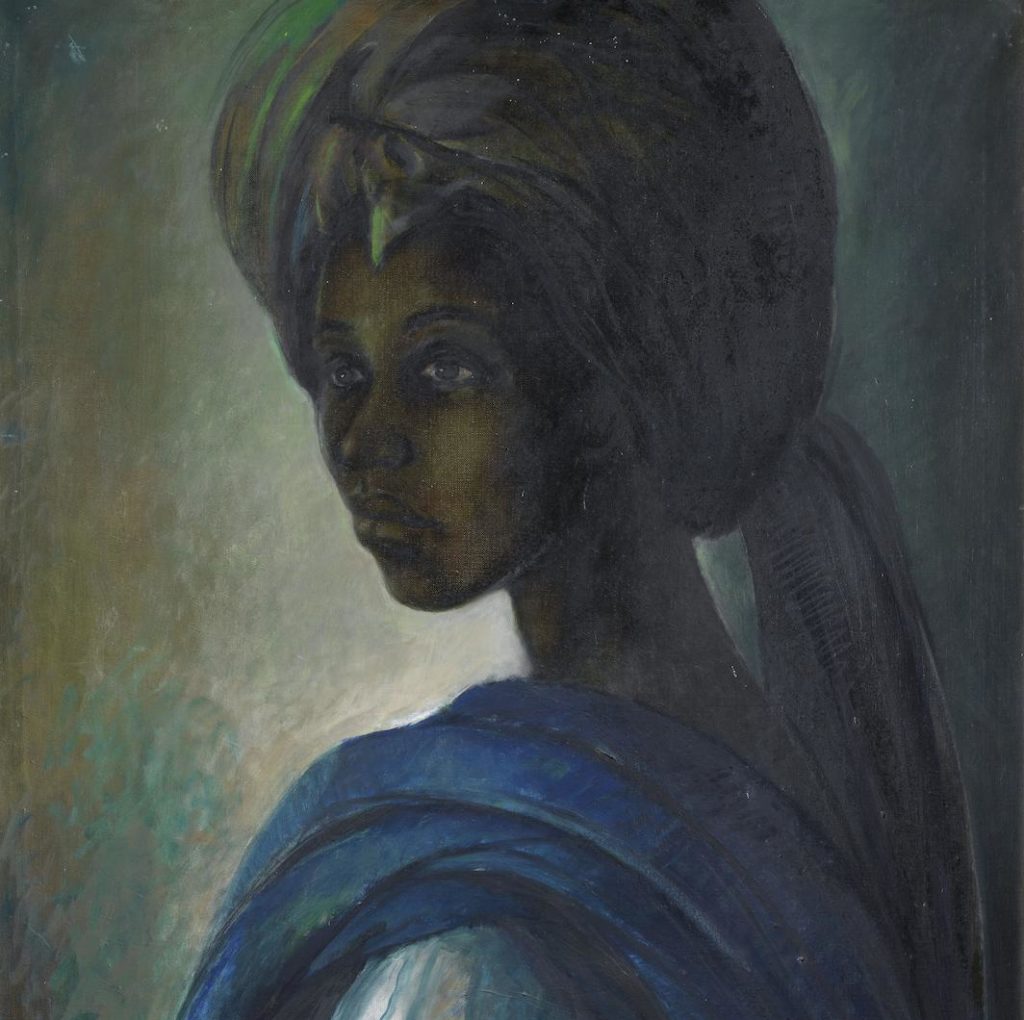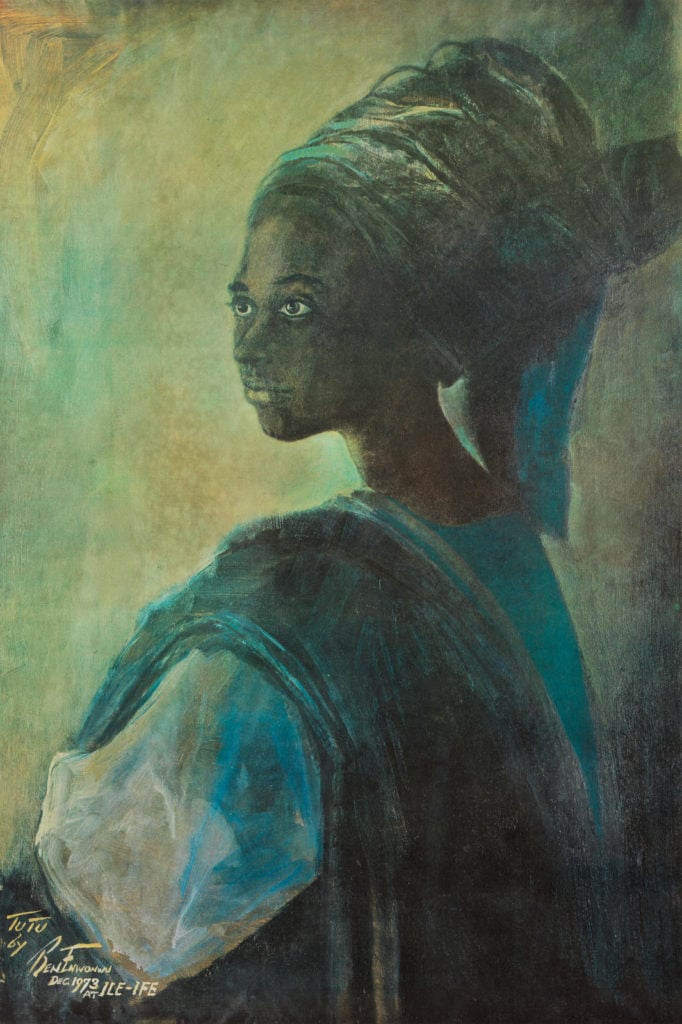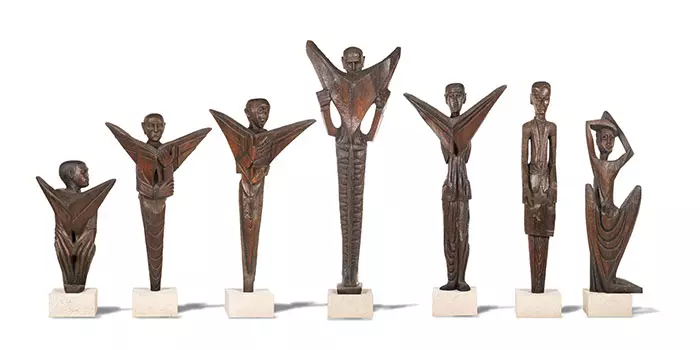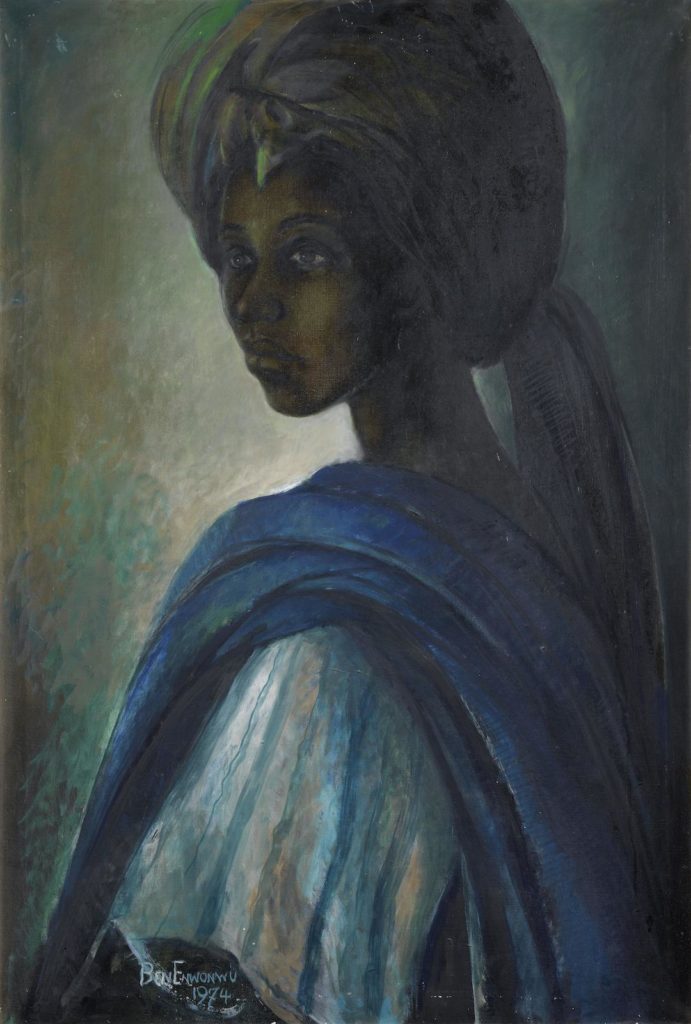Auctions
A Long-Lost Nigerian Masterpiece Found in a London Apartment Just Set a Record at Bonhams
Lost for decades, the rediscovered portrait was a hit at auction.

Lost for decades, the rediscovered portrait was a hit at auction.

A long-lost masterpiece by Nigerian artist Ben Enwonwu sold yesterday for £1.2 million ($1.67 million) at “Africa Now,” the first-ever evening sale of contemporary African art at Bonhams London. The 1974 painting, titled Tutu, depicts Adetutu Ademiluyi, a Nigerian royal princess. Hammered down to an anonymous phone bidder after a 20-minute bidding war, it is now the most expensive Nigerian Modernist work ever sold at auction.
The painting had been assumed lost for decades before the family that owned it invited a Bonhams specialist to appraise it late last year. “I was absolutely staggered when I first saw the piece. The owners, who had inherited it, had no idea of its current value,” Giles Peppiatt, the director of African art at Bonhams, told Nigerian novelist Ben Okri in the Financial Times.
The painting is “the most significant discovery in contemporary African art in over 50 years,” Okri wrote. “It is the only authentic Tutu, the equivalent of some rare archaeological find.”

Ben Enwonwu, Tutu (1973). The first of three Tutu paintings was stolen in 1994 and its whereabouts remain unknown. Courtesy of Bonhams London.
Enwonwu tracked down the princess in the town of Ile-Ife and convinced the royal family to let him paint her portrait in 1974. The painting became a Nigerian icon, a sort of African Mona Lisa; poster reproductions hang on walls all over the country, according to the FT.
The pre-sale estimate for the work topped out at just £300,000 ($266,000). According to the artnet Price Database, the artist’s previous record at auction was £361,250 ($544,042) for a set of seven wooden sculptures commissioned by the Daily Mirror in 1960 and sold at Bonhams London in 2013.

These seven wooden sculptures commissioned from Ben Enwonwu by the Daily Mirror
in 1960 previously held the artist’s auction record. Photo courtesy of Bonhams London.
Tutu was last publicly exhibited in 1975 at the Italian embassy in Lagos, and its whereabouts were unknown for decades. Enwonwu made three original Tutu works featuring Asemiluyi, of which this is the second. The other two have since been lost; the first version was stolen shortly before the artist’s death in 1994. (The sitter is believed to still be alive and living in Lagos, although members of her family are reportedly unsure of her exact whereabouts.)
“The portrait of Tutu is a national icon in Nigeria and of huge cultural significance. It is very exciting to have played a part in the discovery and sale of this remarkable work,” Peppiatt said in a statement. He said he has often been asked to examine Tutu works, but up until now they had all been prints.

Ben Enwonwu, Tutu (1974). Courtesy of Bonhams London.
Painted three years after the end of the Nigerian Civil War, Tutu was intended as an expression of national unity—the artist and the princess’s tribes had been on opposite sides of the conflict—and Enwonwu’s way of celebrating his country’s cultural identity. “He thought she epitomized what he was trying to push about Africa,” Oliver Enwonwu, the artist’s son, told the Guardian.